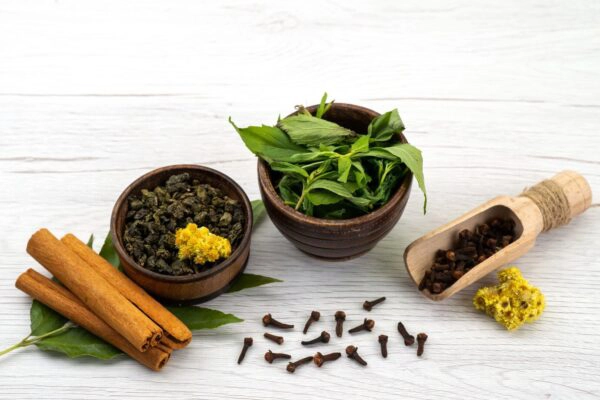
Ayurveda 101: Understanding Doshas & Healing Practices
Health is your greatest treasure, and Ayurveda helps you bring alternative healing methods directly into your daily life by learning about dosha type and dosha balancing techniques. Ayurveda has been practised for over 5,000 years as one of the oldest healing systems in the world. It believes that health derives from a balance of mind, body and spirit.
What is Ayurveda?

Ayurveda means “the science of life” in Sanskrit. It is a traditional medicine system from India. Ayurveda focuses on preventive health, natural remedies, and lifestyle changes that align with nature. Some Ayurvedic practices include:
- Herbal medicine
- Dietary guidelines
- Meditation and yoga
- Detox techniques
- Massage and aromatherapy
Ayurveda sees each person as unique and requires a personalised approach to wellness. A key concept in Ayurveda is doshas, which control bodily functions and affect mental and physical health.
Understanding the Three Doshas
Ayurveda teaches that the body has three primary energies, known as doshas: Vata, Pitta, and Kapha. Each person has a unique mix of these doshas, influencing their personality, metabolism, and health. Dosha balancing is crucial for wellness.
1. Vata Dosha – The Energy of Movement
Element: Air & Ether
Characteristics: Creative, energetic, quick-thinking; prone to dryness and anxiety
Signs of Imbalance: Insomnia, digestive issues, joint pain, nervousness. Balancing Vata:
- Eat warm, nourishing foods like soups and stews.
- Keep a regular daily routine.
- Engage in grounding activities like yoga and meditation.
2. Pitta Dosha – The Energy of Transformation
Element: Fire & Water
Characteristics: Ambitious, intelligent, passionate; prone to inflammation and irritability
Signs of Imbalance: Acid reflux, skin rashes, anger, overheating. Balancing Pitta:
- Avoid spicy, fried, and acidic foods.
- Try cooling exercises like swimming or gentle yoga.
- Use relaxation techniques such as deep breathing and aromatherapy.
3. Kapha Dosha – The Energy of Stability
Element: Earth & Water
Characteristics: Calm, compassionate, strong immunity; prone to weight gain and sluggishness
Signs of Imbalance: Lethargy, congestion, excessive sleep, lack of motivation. Balancing Kapha:
- Exercise regularly to boost energy levels.
- Choose light, warming foods like ginger, turmeric, and leafy greens.
- Limit heavy and oily foods that can slow digestion.
- Pro Tip: An Ayurvedic practitioner can help you find your dominant dosha and suggest personalised healing practices.
Ayurveda for Health: Natural Healing Practices

Ayurveda provides many alternative healing methods to promote balance and well-being. These practices work with nature’s cycles and help detoxify and nourish the body.
1. Ayurvedic Diet for Dosha Balancing
Eating for your dosha type helps keep internal harmony and avoid disease.
- Vata: Warm, moist foods (stews, cooked grains, root vegetables).
- Pitta: Cooling, hydrating foods (coconut, cucumber, melons).
- Kapha: Light, dry foods (spices, legumes, leafy greens).
- Pro Tip: Use Ayurvedic herbs for stress, digestion), and inflammation).
2. Daily Routine (Dinacharya) for Optimal Health
A structured daily routine can improve both physical and mental health.
- Wake up before sunrise to match nature’s rhythms.
- Try oil pulling and tongue scraping for oral detox.
- Drink warm lemon water to help digestion.
- Do self-massage (Abhyanga) with herbal oils for relaxation.
- Pro Tip: A morning routine based on your dosha can boost productivity and energy.
3. Yoga & Meditation for Mind-Body Balance
Yoga and meditation are key in Ayurveda for emotional stability and dosha balancing.
- Vata: Slow, grounding yoga (Hatha, Yin Yoga) and guided meditation.
- Pitta: Cooling, heart-opening yoga (Moon Salutations, Restorative Yoga and mindfulness meditation.
- Kapha: Energizing yoga (Vinyasa, Power Yoga) and breathwork (Kapalabhati).
- Pro Tip: Just 10-15 minutes of daily meditation can significantly improve focus and emotional health.
4. Detoxification & Cleansing (Panchakarma)
Panchakarma is Ayurveda’s method for deep cleansing and detoxing the body.
- Herbal oil massage (Abhyanga) boosts circulation.
- Steam therapy (Swedana) helps eliminate toxins through sweat.
- Herbal enemas (Basti) support digestive health.
- Pro Tip: Simple home detox methods, like drinking warm ginger water or fasting weekly, can be natural detox.
5. Ayurvedic Herbs & Remedies
Herbs are vital in Ayurveda for health, helping digestion, immunity, and mental clarity.
- Ashwagandha: Reduces stress and boosts energy.
- Triphala: Aids digestion and detoxifies.
- Brahmi: Enhances thinking and lowers anxiety.
- Turmeric: Fights inflammation and strengthens immunity. Pro Tip: Enjoy herbal teas from Ayurvedic herbs for relaxation and balance.
Incorporating Ayurveda into Daily Life
You can adapt Ayurvedic principles with small, mindful steps:
- Identify your dominant dosha and adjust your diet.
- Create a consistent daily routine with self-care.
- Add Ayurvedic herbs and remedies to your wellness plan.
- Practice mindful eating and meditation for better clarity.
- Limit processed foods and focus on whole, plant-based meals. Pro Tip: Keeping a journal to track how Ayurvedic practices affect you can help create a personalised routine.
Ayurvedic Healing Practices

Ayurveda is a holistic approach to wellness that uses dosha balance and individualised health practices.
In daily life, the Ayurvedic way can enhance energy, mental clarity, and emotional balance. Ayurveda provides you with the tools to take charge of alternative healing methods such as diet, meditation, and herbal remedies.
But have you ever tried Ayurvedic healing practices? Tell us about your experiences in the comments!


